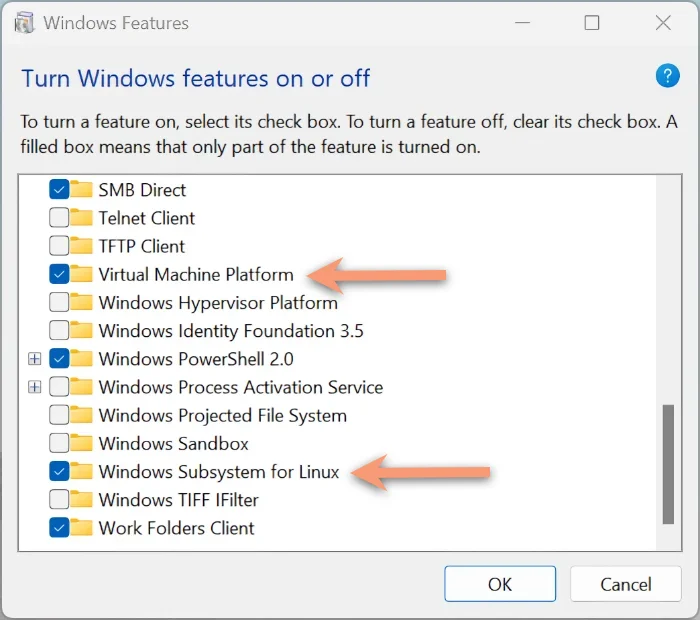I’m not going to lie. Windows Subsystem for Linux (WSL) is a helpful technology. It’s supposed to have made getting a Linux environment on Windows easier. However, having just tried getting it up and running on the lone Windows box I own, I can confirm it’s a pain to install unless you’re a Windows system administrator or know what you’re doing. The hype for WSL2 appears to have overlooked the user experience.
Error Messages that may have got you here
All of these error messages are terrible and unhelpful. Yes, Microsoft, it should be WAY easier to get WSL2 up and running.
| |
| |
| |
| |
Note: If a different error message got you here, let me know and I’ll add it here.
Why doesn’t this just work?
If you’re like me and went to the Microsoft Store to install WSL2 and Ubuntu, you will have a bad time. You need to do more than that to get WSL2 up and running (before installing a Linux distro). Again, if you’re like me, back out all the changes (Add or remove programs), you made, and let’s get everything working right. Another potentially helpful tip from someone who hasn’t used Windows regularly in a decade; hit the Windows key and search for everything.
Windows 11 is like four versions of Windows smashed into one. The thing we need to do first is in a feature that appeared in Windows 98.
Installing WSL2 the right way
Push the Windows key, search for “Turn Windows features on or off” and click it. In here, we need to tick two boxes, then restart the computer once everything is done installing:
- Virtual Machine Platform
- Windows Subsystem for Linux

Install a Linux Distribution
Once Windows is back up and you’re logged in, you have a handy command line tool: wsl.exe
Installing Linux distros from the Microsoft Store should work. However, I suggest using the CLI (it’s fewer clicks and pretty straightforward).
Run PowerShell as an Administrator. Of course, there are two ways to do this. If you have the Terminal app installed, you can right-click the Start button, and there should be an option for Terminal (Admin). The other way is to push the Windows key, search for PowerShell, and select Run as Administrator.
The first command you should run is wsl --help. That will give you a ton of info about the wsl command line tool (this is the output of the help flag.)
If you want to list available Linux distros, run wsl --list --online and you should see something like this:
| |
When you’ve made your choice and are ready to install, don’t follow the command in the above output, as I don’t think that worked for me. I had to dig a little deeper into the help file. Instead, run:
| |
After a bit, you’ll be dropped into your environment and can experience the joy of running Linux on Windows with WSL2. I’m just sad I had to scour the internet, about it, and phone a friend to get it all working.
Regardless, enjoy Linux in Windows!
